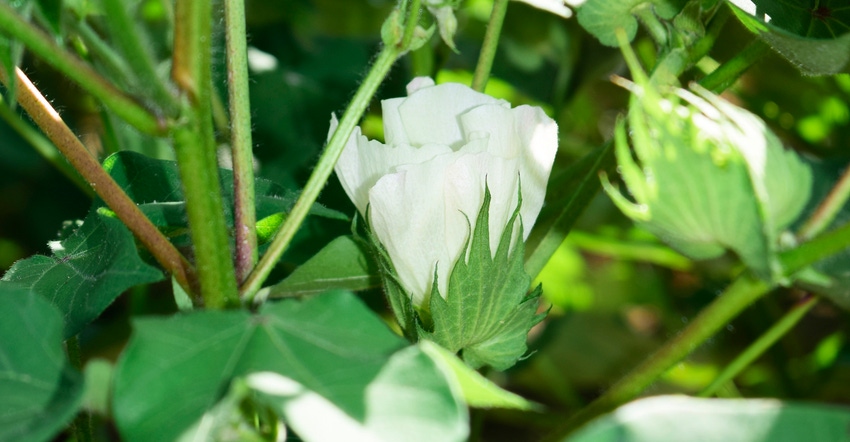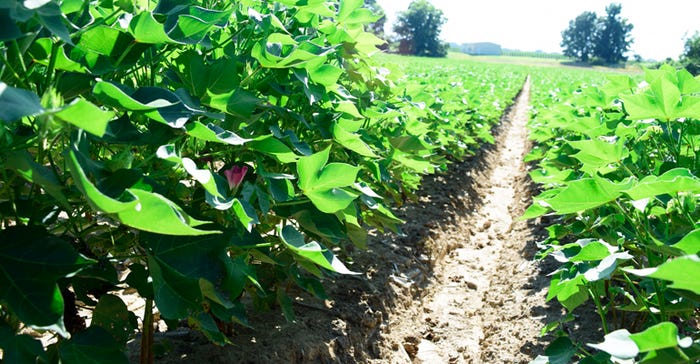July 1, 2018

Sponsored Content
“With a late crop, growers can expect more issues with insect pests. It’s a simple matter of the pests having more time to build population levels,” says Gus Lorenz, Arkansas Extension entomologist.
Environmental conditions will likely continue to impact insect pressure with hot, dry weather exacerbating problems with mites and caterpillar pests. Additionally, the summer heat can obliterate nearby host plants, pushing tarnished plant bugs into healthy, green cotton fields. Adjoining corn or early planted soybean fields also can act as a reservoir for plant bug populations that later will make their home in neighboring cotton.
Growers with a late-planted crop should expect to have more insect problems and budget accordingly, Lorenz says.
How to minimize resistance
Minimizing resistance is vital, especially in years with heavy pest pressure requiring additional insecticide treatments. To achieve optimum insect control while also minimizing potential resistance development, growers should evaluate previous years’ insecticide resistance management (IRM) plans, rotate modes of action and rotate crops.
“We have seen the loss of pyrethroids as a control method, although, as a tank-mix partner, they still increase efficacy of some products,” Lorenz says. Some of the older insecticide chemistries, such as the organophosphates — dimethoate and methamidophos — are no longer effective. In recent years, we have seen increasing tolerance to neonics such as imidacloprid and thiamethoxam, and while resistance has not been documented, there is no doubt they don’t work as well as they did.”
To avoid further insecticide resistance development, Lorenz recommends growers rotate chemistries and tank-mix different classes of insecticides. Planting early and avoiding late-season insect populations also can help improve pest control efficacy.
What role does Transform® WG insecticide play in an effective IRM program?
“Transform has become the standard for us for tarnished plant bug control. It’s the product that we compare all other insecticides for control,” Lorenz says. “It is a different class of insecticide and, used in a rotation, provides a superior level of control for plant bugs. It takes the pressure off the other classes of insecticides.”
He adds, “While acephate is still effective, continual use of the product in repeated applications will make it less effective and more prone to control loss in a season. Transform is the stopper. It will clean up plant bugs when pressure is high.”
“To maintain yield potential, it’s critical that tarnished plant bug populations are under control by the time cotton begins to bloom and the canopy is beginning to close,” Lorenz says. “Once canopy closure occurs, it becomes more difficult to get tarnished plant bug under control. Transform will help achieve the needed control at that critical point in the season.”

Rotate for improved control
Another good early season pest control option is DuPont™ Vydate® C-LV insecticide/nematicide, especially in fields with a history of heavy nematode pressure.
“Vydate can be substituted for the neonics when applications are warranted before cotton begins to bloom. It’s best used in pre-blooming cotton,” Lorenz says.
To learn more about pest pressure in your area, contact your local Extension agent. To find out more about Section 18 status updates for Transform, visit www.TransformMyCotton.com.
®™Trademark of The Dow Chemical Company (“Dow”) or E. I. du Pont de Nemours and Company (“DuPont”) or affiliated companies of Dow or DuPont. DuPont™ Vydate® C-LV insecticide/nematicide is a restricted-use pesticide and is not registered for sale or use in all states. Contact your local DuPont retailer or representative for details and availability in your state. Transform WG is not registered by U.S. EPA for sale or use on cotton. Transform has Section 18 Specific Emergency Exemptions for use on cotton in Arkansas, Arizona, California, Louisiana, Mississippi, Missouri, North Carolina, Oklahoma, Tennessee, Texas and select counties in Alabama. To learn more about Transform, to see which states or political subdivisions thereof have Section 18 Specific Emergency Exemptions, to see the limitations on the use of Transform under the Section 18 Specific Emergency Exemption labels, and to find a list of retailers that may carry this product under a Section 18 exemption, call 800-258-3033 or email [email protected]. Always read and follow label directions.
©2018 Dow AgroSciences LLC L53-396-036 (07/18) BR DAAG8TFRM060
About the Author(s)
You May Also Like




